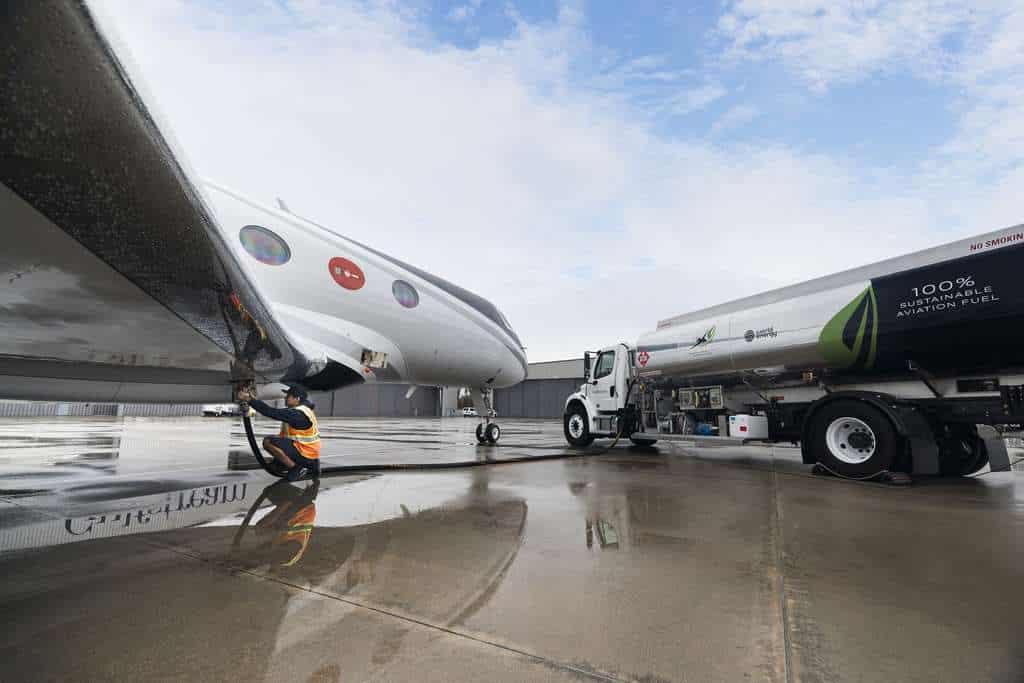On November 20, Gulfstream Aerospace Cooperation announced that it had successfully concluded the world’s first trans-Atlantic flight, conducting completely on sustainable aviation fuel (SAF).
The Gulfstream team collected data during this historical mission to advance the industry to greater heights. The flight is a further stepping stone for the industry to be shifted towards net zero by 2050.
The Historical Flight
The flight was performed by the ultra-modern Gulfstream G600 aircraft, which took off from the company’s birthplace in Savannah, Georgia. The flight to Farnborough in the United Kingdom lasted 6 hours and 56 minutes.
Not only did the SAF help the aircraft to complete the historical flight. The engine plays a pivotal role in this regard.
The G600 is powered by Pratt & Whitney PW815GA engines using 100% SAF. This also shows cases of Pratt & Whitney’s commitment and technological advancement to capture the industry’s aviation future implementation of renewable fuels.
Renewable fuels lower carbon, sulfur, and aromatics emitted into the atmosphere.
Data sampled from this particular G600 flight will assist Gulfstream and its partners in the industry to champion SAF and to enable future low-aromatic renewable fuels, particularly under cold temperatures for prolonged flight durations.
[monsterinsights_popular_posts_inline]

Mark Burns, president of Gulfstream stated: “Gulfstream is innovating for a sustainable future. One of the keys to reaching business aviation’s long-term decarbonization goals is the broad use of SAF in place of fossil-based jet fuel.”
“The completion of this world-class flight helps to advance business aviation’s overarching sustainability mission and create positive environmental impacts for future generations,” he stated.
About SAF
The sustainable aviation fuel used on the flight was produced by World Energy and delivered by World Fuel Services.
The SAF mixture is comprised of 100% Hydro processed Esters and Fatty Acids (neat HEFA). This mixture comes with at least 70% lower lifecycle carbon dioxide emission than fossil-based jet fuel. This will inevitably lower the aviation industry’s impact on the environment.
Not only the SAF is known for its renewable power, but the fuel also reduces the impact on air quality on a micro level, with its ultra-low sulfur content. This can also reduce non-CO2 impacts, including air quality (PM2.5) and the wildlife.
Anthony Rossi, vice president, Sales & Marketing, Pratt & Whitney Canada commented on the impressive feat:
“Gulfstream continues to break new ground in the sustainable aviation space, and we applaud them for completing this mission as we work to validate the compatibility of our engines with unblended SAF.”
Gulfstream touts that its flight would have not been made possible by other key partners, including Honeywell, Safran, and Eaton.
Burns personally thanked Gulfstream partners: “We’d like to thank all our partners for their help in making this milestone flight happen and for their ongoing partnership in collaborating with the extended SAF community to champion the aviation industry’s path to 100% SAF usage.”
This historical flight made Gulfstream the first business jet manufacturer to fly on 100% SAF, which shows the company’s commitment to championing sustainability in aviation.

Click the banner to subscribe to our weekly newsleter.

Click the photo to join our WhatsApp channel so then you can stay up to date with everything going on in the aviation industry!









